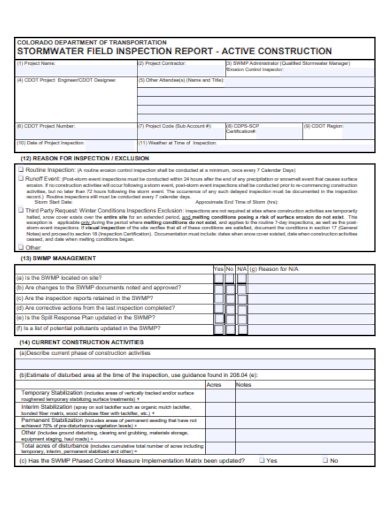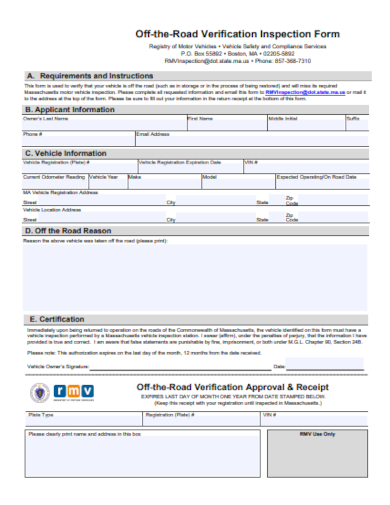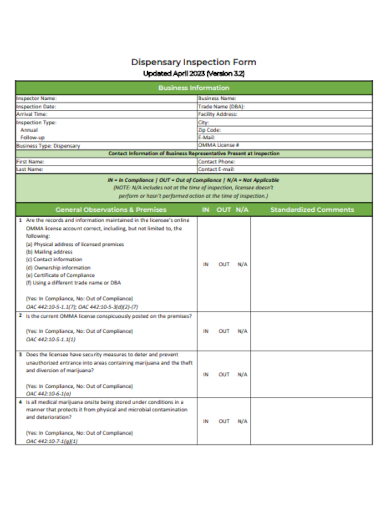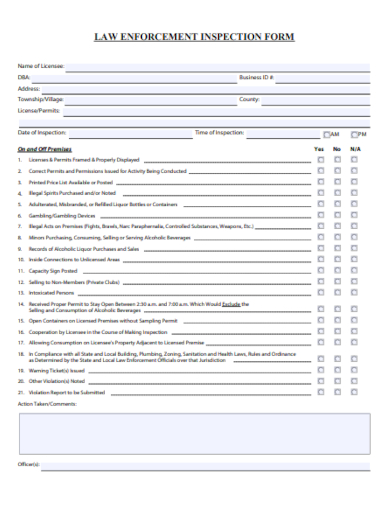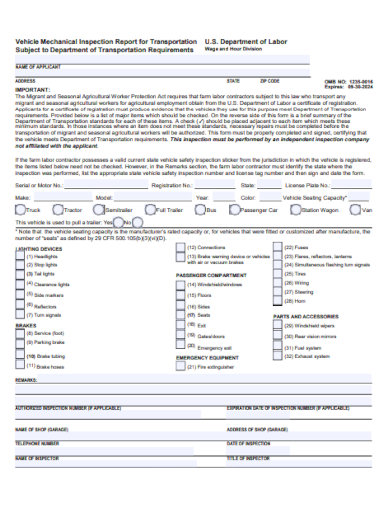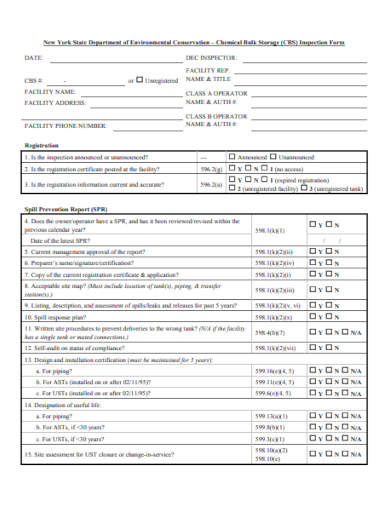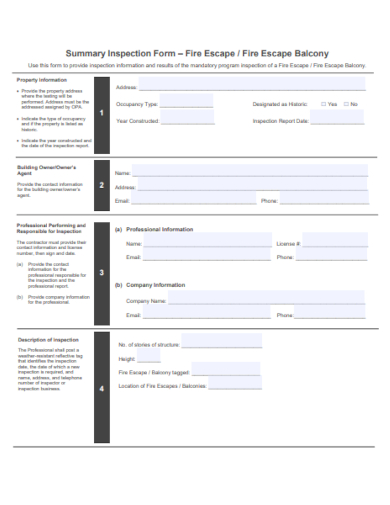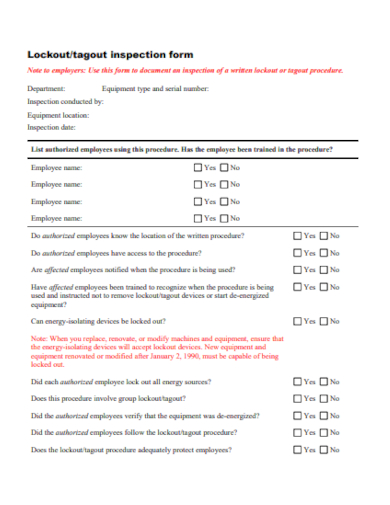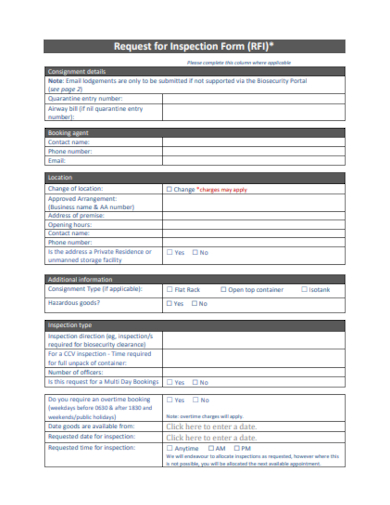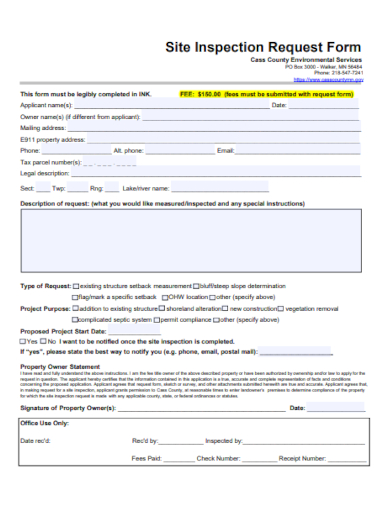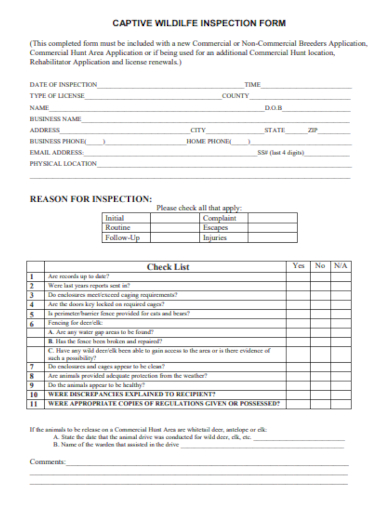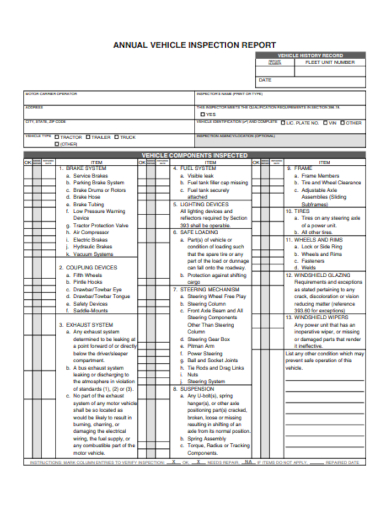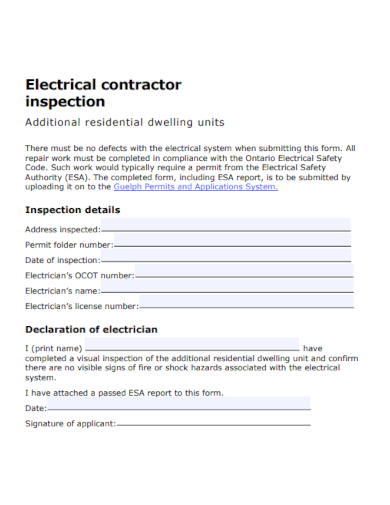The process of inspection plays a crucial role in ensuring efficiency, safety policy, and quality control. Inspection forms, also known as checklists or notice of assessment forms, are invaluable tools that guide inspectors through the examination process and help them document their findings. Inspection forms provide a structured and systematic approach to evaluating various aspects of business operations. By utilizing standardized checklists, businesses can ensure that every critical component or process is thoroughly examined and assessed. This helps streamline operations by preventing oversights, minimizing errors, and reducing the time and effort required for inspections. Inspection forms allow businesses to optimize their resources and maximize productivity skills, leading to improved operational efficiency and smoother workflow diagram.
20+ Inspection Form Samples
1. Cleaning Service Inspection Form Template
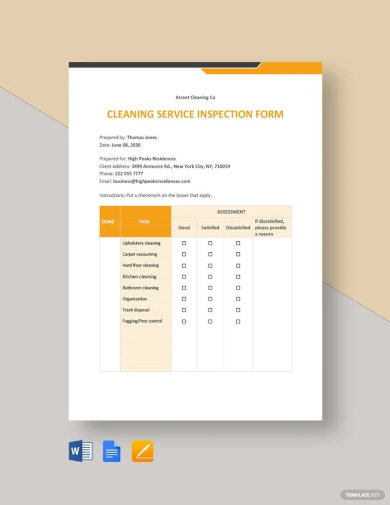
2. Vehicle Inspection Checklist Form Template
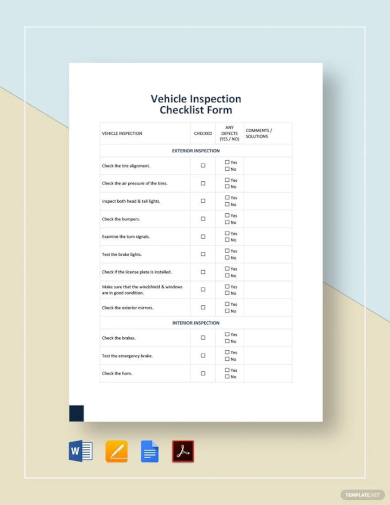
3. Flooring Inspection Form Template
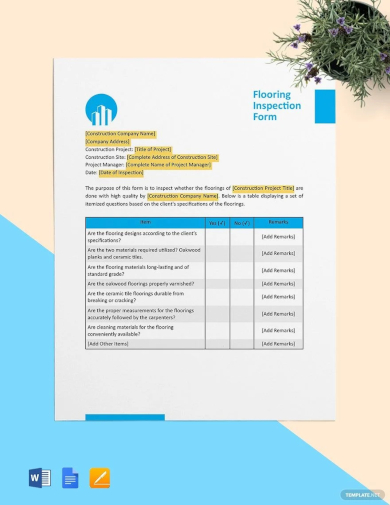
4. Home Inspection Checklist Form Template
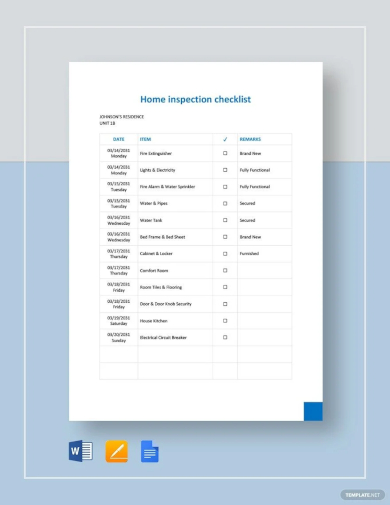
5. Painting Inspection Form Template
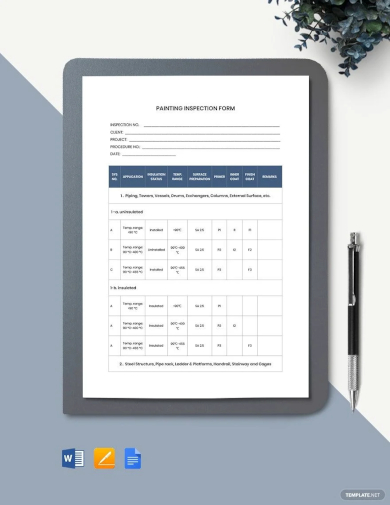
6. Construction Inspection Form
7. Vehicle Verification Inspection Form
8. Sample Inspection Form
9. Printable Inspection Form
10. Inspection Form in PDF
11. Maintenance Inspection Report Form
12. Equipment Safety Inspection Form
13. Property Summary Inspection Form
14. Equipment Inspection Form
15. Request for Inspection Form
16. Site Inspection Request Form
17. Pre-Delivery Inspection Form
18. Inspection Checklist Form
19. Inspection Report Form
20. Vehicle Safety Inspection Form
21. Electrical Contractor Inspection Form
What is Inspection Form?
An inspection form is a structured document or checklist used to guide and document the process of inspecting and evaluating various aspects of a specific item, system documentation, process document, or facility. It serves as a standardized tool that helps inspectors or evaluators ensure consistency and thoroughness in their notice assessments. Inspection forms typically include a series of predefined questions, criteria, or checkpoints that inspectors need to address during the inspection. These forms may cover areas such as quality control, safety compliance, regulatory adherence, equipment functionality, or any other relevant factors depending on the specific context of the inspection.
How To Make Inspection Form?
The purpose of an inspection form is to facilitate organized and systematic inspections, provide a record of findings, and support decision-making and action planning based on the assessment results. Creating an effective inspection form involves several key steps. Here’s a guide on how to make an inspection form:
Step 1- Define the Purpose and Scope
Identify the specific purpose and project scope of the inspection form. Determine what you want to assess, whether it’s equipment, processes, safety measures, or other aspects relevant to your industry or organization.
Step 2- Identify Inspection Criteria
Identify the key criteria or factors that need to be evaluated during the inspection. These criteria should align with your objectives and desired outcomes. Break them down into specific items or questions that can be addressed during the inspection.
Step 3- Organize the Form
Structure the inspection form in a logical and systematic manner. Consider grouping related items together and arranging them in a sequential order that aligns with the inspection report process. Use clear headings and subheadings to enhance readability.
Step 4- Create Checkboxes, Rating Scales, or Fields
For each inspection item or question, provide response options that allow inspectors to indicate the status or condition. This can include checkboxes for binary (yes/no) responses, rating scales (e.g., numerical ratings or Likert scales) for qualitative assessments, or fields for entering specific measurements or observations.
Why is an inspection form important?
Inspection forms are important because they provide a standardized and systematic approach to inspections. They ensure consistency, thoroughness, and accurate documentation of inspection findings. Inspection forms also help in streamlining operations, enhancing quality control, ensuring regulatory compliance, and supporting data-driven decision-making.
How do you create an effective inspection form?
To create an effective inspection form, define the purpose and scope, identify inspection criteria, organize the form in a logical manner, include clear instructions or guidance, provide appropriate response options, and consider any additional documentation requirements. Regularly review and update the form based on feedback and changing requirements.
Can inspection forms be customized for different industries or organizations?
Yes, inspection forms can and should be customized to align with the specific needs and requirements of different industries or organizations. The criteria, instructions, and response options can be tailored to address industry-specific regulations, standards, or processes.
Inspection forms are indispensable tools for any industry that values efficiency, quality, and safety. By providing a structured framework for inspections, these forms streamline operations, enhance quality control, and enable informed decision-making. Their role in risk assessment, data collection, standardization, and compliance cannot be overstated. Organizations that embrace the use of inspection forms stand to benefit from improved efficiency, enhanced quality, and reduced risks, ultimately leading to long-term success and customer satisfaction.
Related Posts
Parent Consent Form Samples & Templates
Sample Release of Liability Forms
Sample Training Feedback Forms
Sample Sworn Affidavit Forms
Agreement Form Samples & Templates
Vehicle Inspection Forms Samples & Templates
Sample Employee Advance Forms
Sample Child Travel Consent Forms
Sample Testimonial Request Forms
Sample Employee Details Forms
Sample Divorce Forms
Sample Attestation Forms
Employee Performance Appraisal Form Templates
FREE 9+ Sample Presentation Evaluation Forms in MS Word
FREE 10+ School Admission Form Samples & Templates in MS Word | PDF

